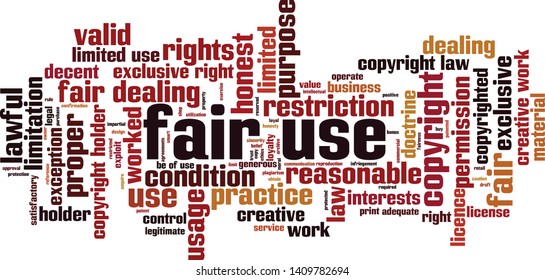navigating fair use in academic projects

A brief explanation
Fair use is "a legal doctrine that promotes freedom of expression by permitting the use of copyright-protected works in certain circumstances."
What this means in practice is that if you are making a creative project, and are intending to use video, audio, or other visual media that you don't own the copyright to, these four considerations are what you should take into account for assessing the legality of how you are using that material:
- the purpose and character of your use
- the nature of the copyrighted work
- the amount and substantiality of the portion taken
- the effect of the use upon the potential market
Please take a look at this for more detailed information on each of these four factors.
As well, please check out this page from Stanford that discusses this effectively in further detail.
So what? How does this affect me?
Generally speaking if you are "quoting" a small piece from a film in a video essay you're producing in one of your courses, or using a collection of short video and audio clips for a multimedia presentation you are giving, you should be covered by fair use. (After all, both students and teachers depend on fair use so that they can achieve their educational goals!)
In addition to those use cases, though, please take a look at this article that discusses other common examples, as well as some common myths surrounding fair use.
Be mindful of the platform on which you share your creative project
Even if your project abides by the guidelines for fair use, you should still be mindful about how you post and share your creative projects because some hosting platforms are very sensitive to all copyrighted material, regardless of the legality of how it is used. For example:
- Posting onto your course's Canvas site or Google Drive should be fine (your teaching staff, though, may have their own opinions about what is an acceptable quantity of copyrighted media used in a given project, so it's always a good idea to check in with them about this.)
- Posting to Youtube can be a little bit more problematic, because Youtube uses algorithms that scan and search for copyrighted media. So if it were to detect a three minute uninterrupted clip of Beyonce's 'Single Ladies' in your creative project, you may find one day that your video has been taken down because it is deemed a violation of Youtube's policies on this, or it may not allow you to publish the video at all.
- Other hosting sites like Vimeo have not been as historically aggressive in taking down videos that they deem in violation of copyright, but this is not a guarantee of future behavior on this matter.
Be conscious of fair use guidelines, and use good judgement
At the end of the day, it is important to respect BOTH the rights of copyright holders, as well an individual's right to create a new and transformational creative work that employs another person's copyrighted material.
Having an awareness of these guidelines will put you in a better position to make properly-reasoned judgement calls about the use of copyrighted material in your creative projects.